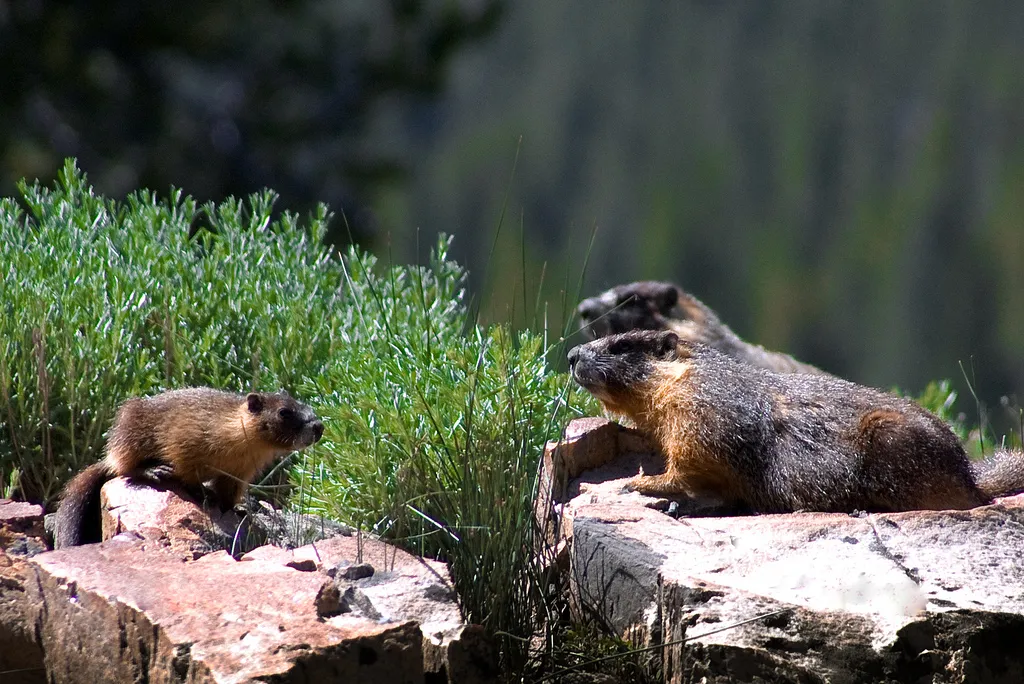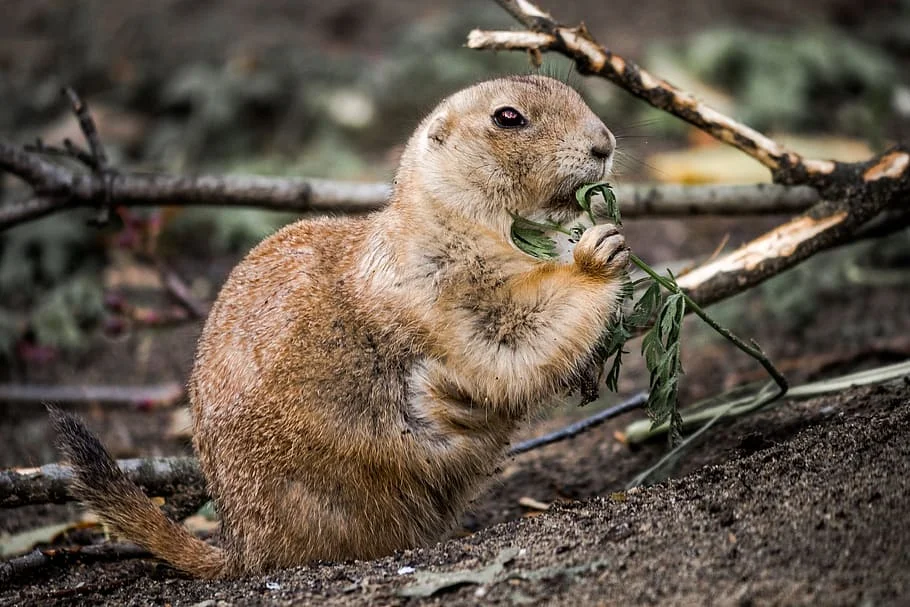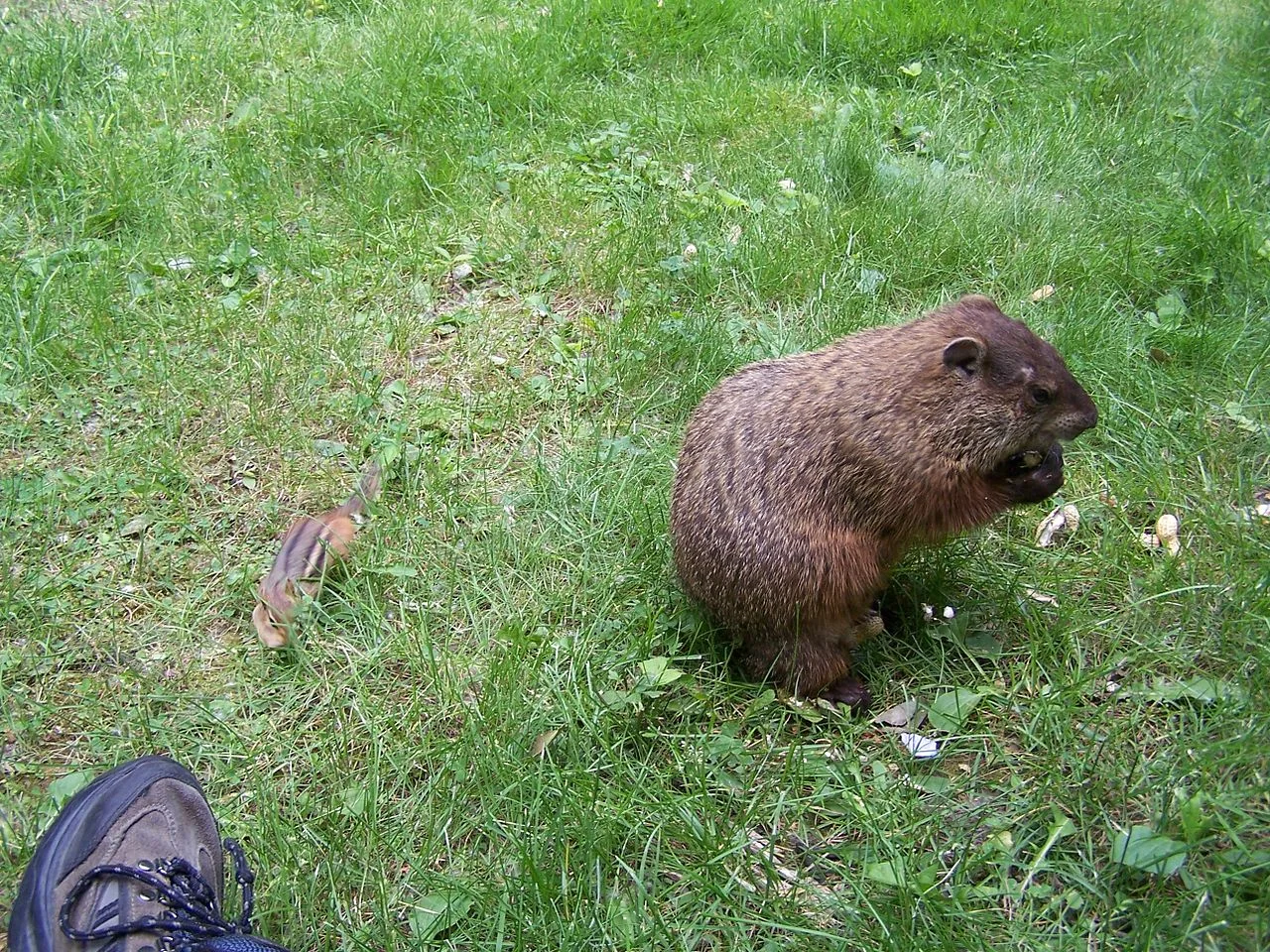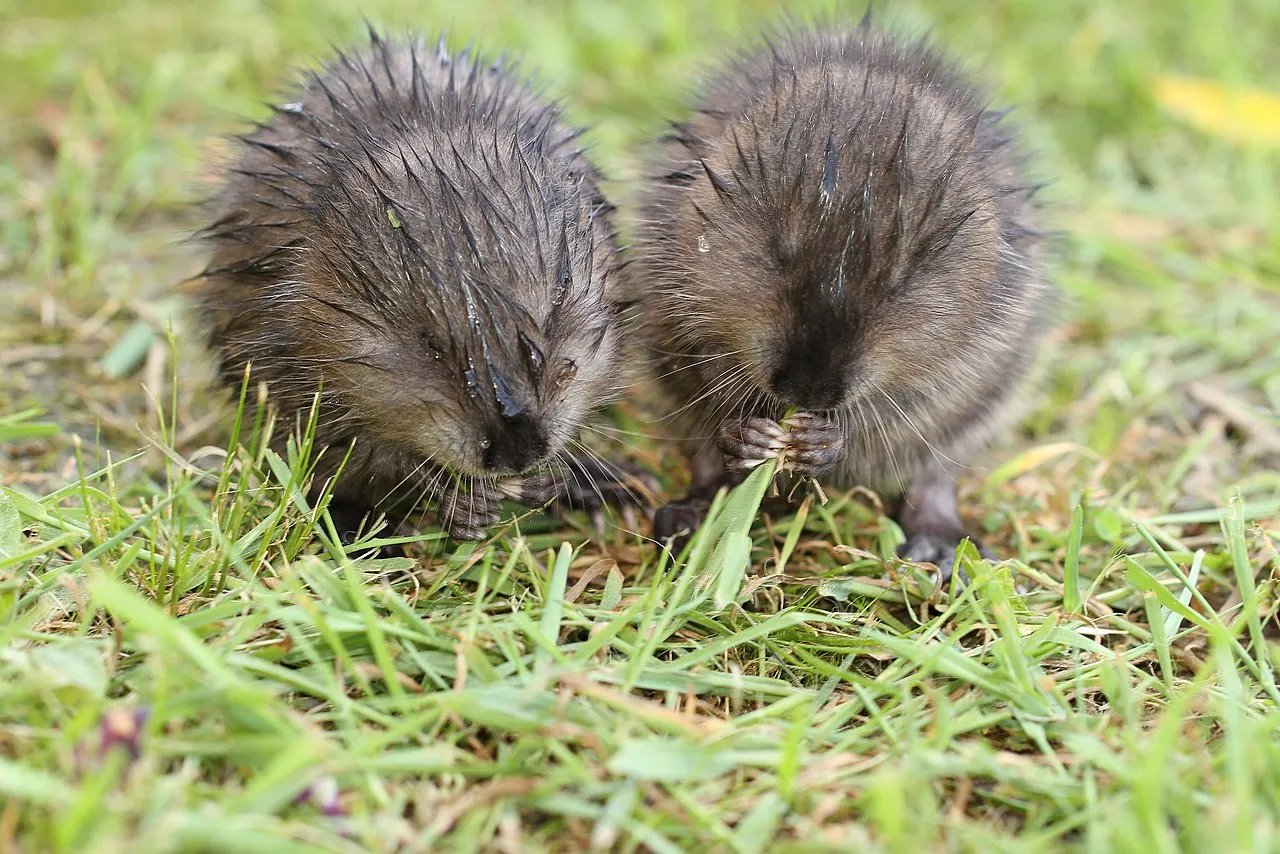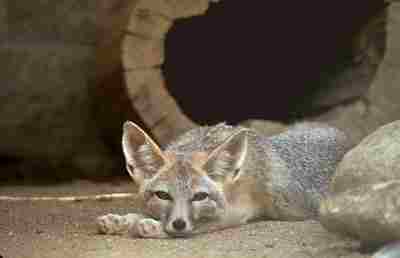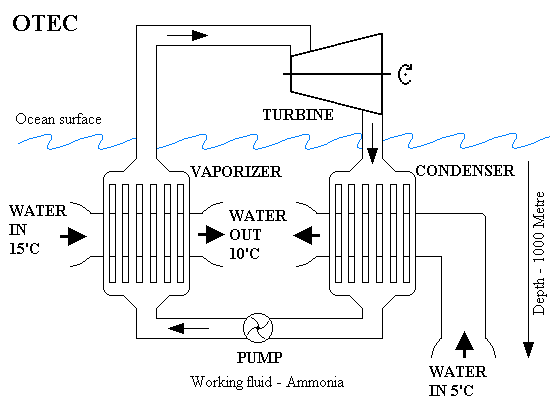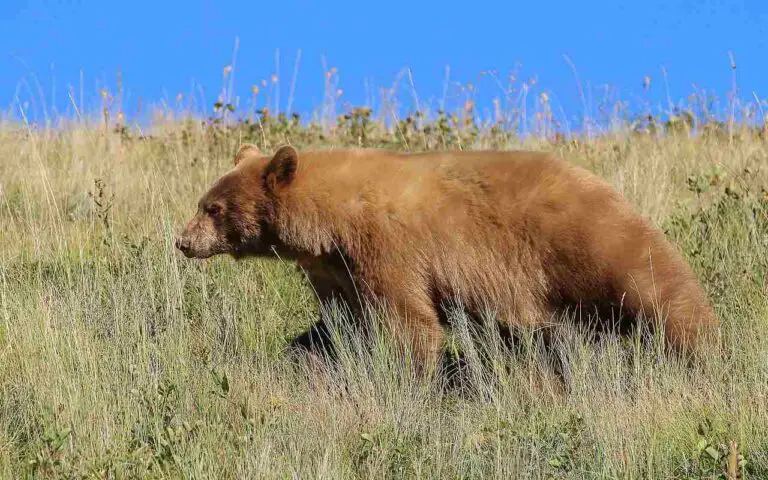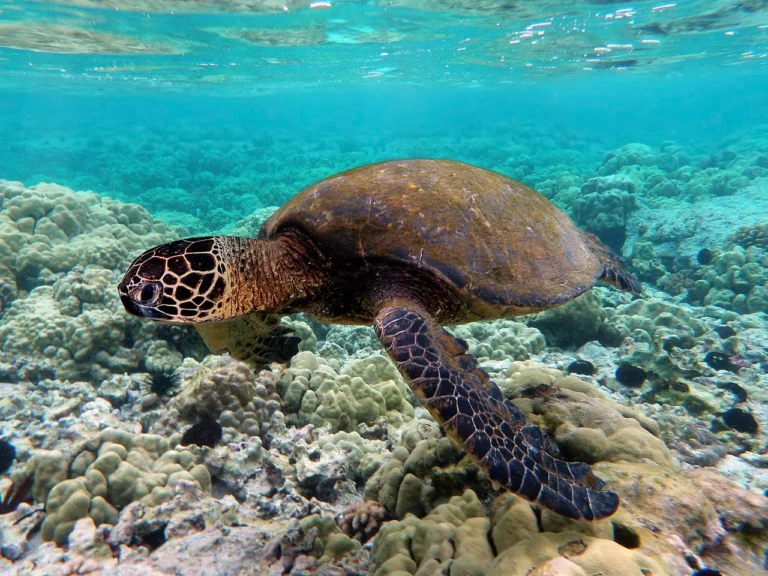Marmot Vs Groundhog Vs Woodchuck Full Comparison
Distinguishing between marmots and groundhogs requires exploring key differences, encompassing size, coloration, and habitat. While they share common features as members of the marmot family, each exhibits unique characteristics.
It must be noted that groundhogs and woodchucks refer to the same animal, and can be classified as a type of marmot. Therefore, this comparison is essentially between groundhogs/woodchucks and other types or species of marmots.
I. Size and Coloration:
– Groundhogs are slightly larger and less colorful than marmots, often displaying a coarse, reddish-brown to gray fur. Marmots, on the other hand, may exhibit more vibrant and diverse colorations.
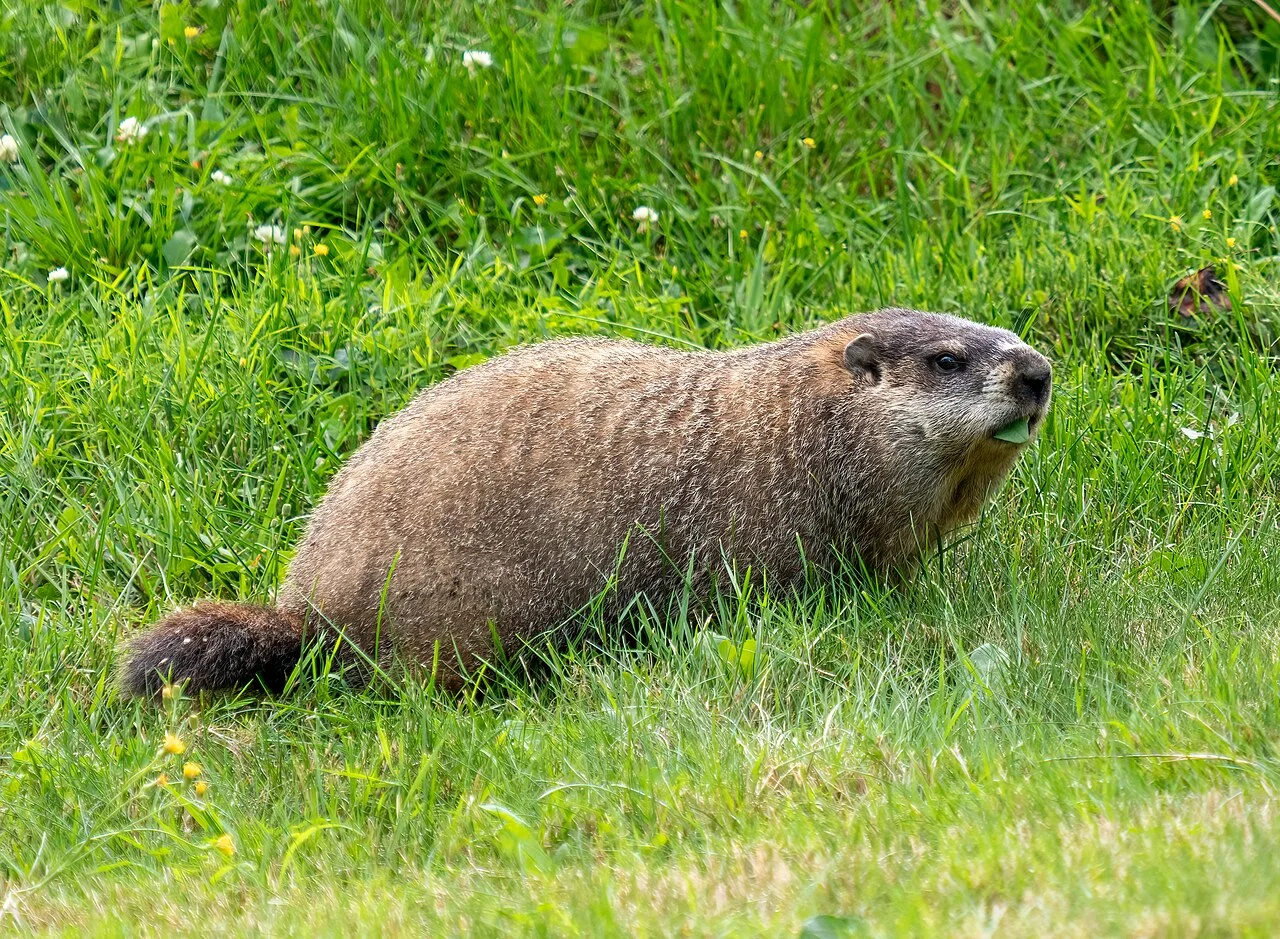
II. Tail and Ears:
– Tail distinctions are notable; groundhogs possess shorter, wider tails similar to squirrels, while marmots may have longer, bushier tails. Marmots also typically feature small, rounded ears, contributing to their distinctive appearance.
III. Tunneling Behavior:
– Both groundhogs and marmots are proficient tunnelers, creating intricate burrow systems for shelter. Groundhog tunnels are well-known for their complexity, often including chambers for nesting and hibernation.
IV. Habitat Preferences:
– Groundhogs favor open areas, while marmots are commonly found in more mountainous regions. Understanding their preferred habitats provides insights into their adaptations and lifestyles.
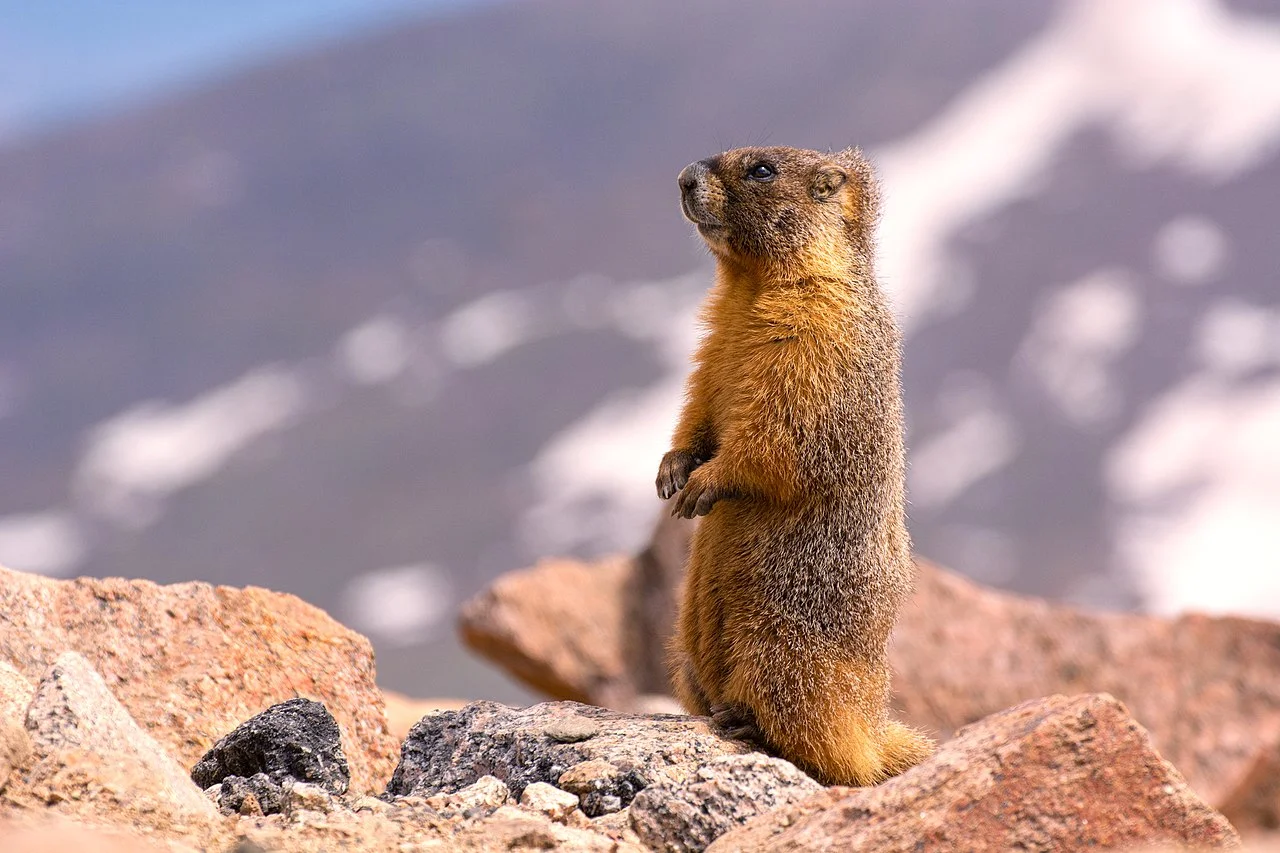
V. Behavioral Characteristics:
– Behavioral variations extend beyond tunneling; groundhogs are known for their burrows near open fields, while marmots may choose elevated, rocky locations. These behavioral differences reflect adaptations to distinct ecological niches.
VI. Importance in Culture:
– Groundhogs are culturally significant, symbolized by events like Groundhog Day. Marmots, while less celebrated in popular culture, contribute to ecosystem dynamics, emphasizing their ecological importance.
*Details of Comparison
| Criteria | Marmot |
Groundhog/Woodchuck
|
| Taxonomy | Genus Marmota, family Sciuridae |
Marmota monax, family Sciuridae
|
| Appearance | Robust build, varied fur colors |
Stocky with brown, coarse fur
|
| Size | 13-27 inches | 16-26 inches |
| Weight | 2-11 pounds | 4-9 pounds |
| Bite Force (PSI) | Moderate | Around 700 PSI |
| Physical Offensive Advantages | Sharp incisors for herbivorous feeding |
Both have sharp incisors for herbivorous feeding
|
| Physical Defensive Advantages | Rely on burrows for protection |
Rely on burrows for protection
|
| Speed | Up to 15-20 mph | Around 8 mph |
| Agility | Exhibits agility on land |
Exhibits agility on land
|
| Senses | Similar reliance on sight and hearing |
Similar reliance on sight and hearing
|
| Overall Physical Capacity | Well-rounded physical abilities |
Well-rounded physical abilities
|
| Habitat Preference | Alpine and mountainous | Diverse habitats |
| Tracks | Distinctive paw prints |
Distinctive paw prints
|
| Lifespan | 8-15 years | 6-8 years |
| Mode of Feeding | Herbivorous | Herbivorous |
| Intelligence | Limited | Moderate |
| Social Behavior | Varied social structures |
Generally solitary
|
| Mode of Reproduction | Polygynous with a breeding season |
Polygynous with a breeding season
|
| Parental Behavior | Varied parental care strategies |
Limited parental care, females primarily responsible
|
| Proximity to Human Areas | Remote areas |
Suburban and rural areas
|
| Behavior Toward Humans | Varies; some species may be elusive |
Can display a range of behaviors
|
| Danger Posed to Humans | Generally minimal danger |
Rarely pose a threat to humans
|
| Associated Precautions | Observe from a distance |
Exercise caution, especially when displaying defensive behavior
|
| Conservation Status | Varies among species | Generally of least concern |
1. Taxonomy:
Marmot (Genus Marmota) is a large ground-dwelling squirrel belonging to the Sciuridae family.
Groundhog and Woodchuck both refer to the same species: Marmota monax.
Order: Rodentia
Family: Sciuridae
Genus: Marmota
Species: M. monax
2. Appearance:
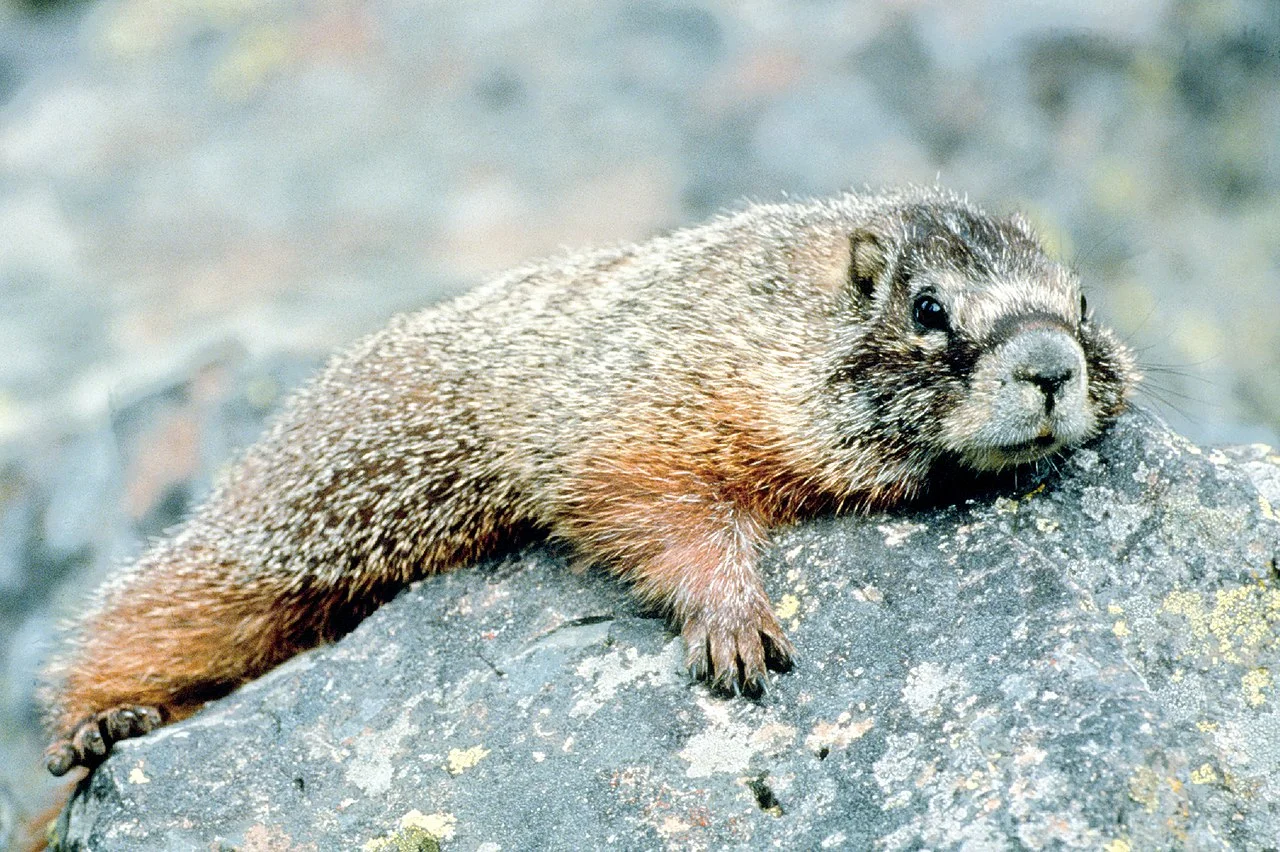
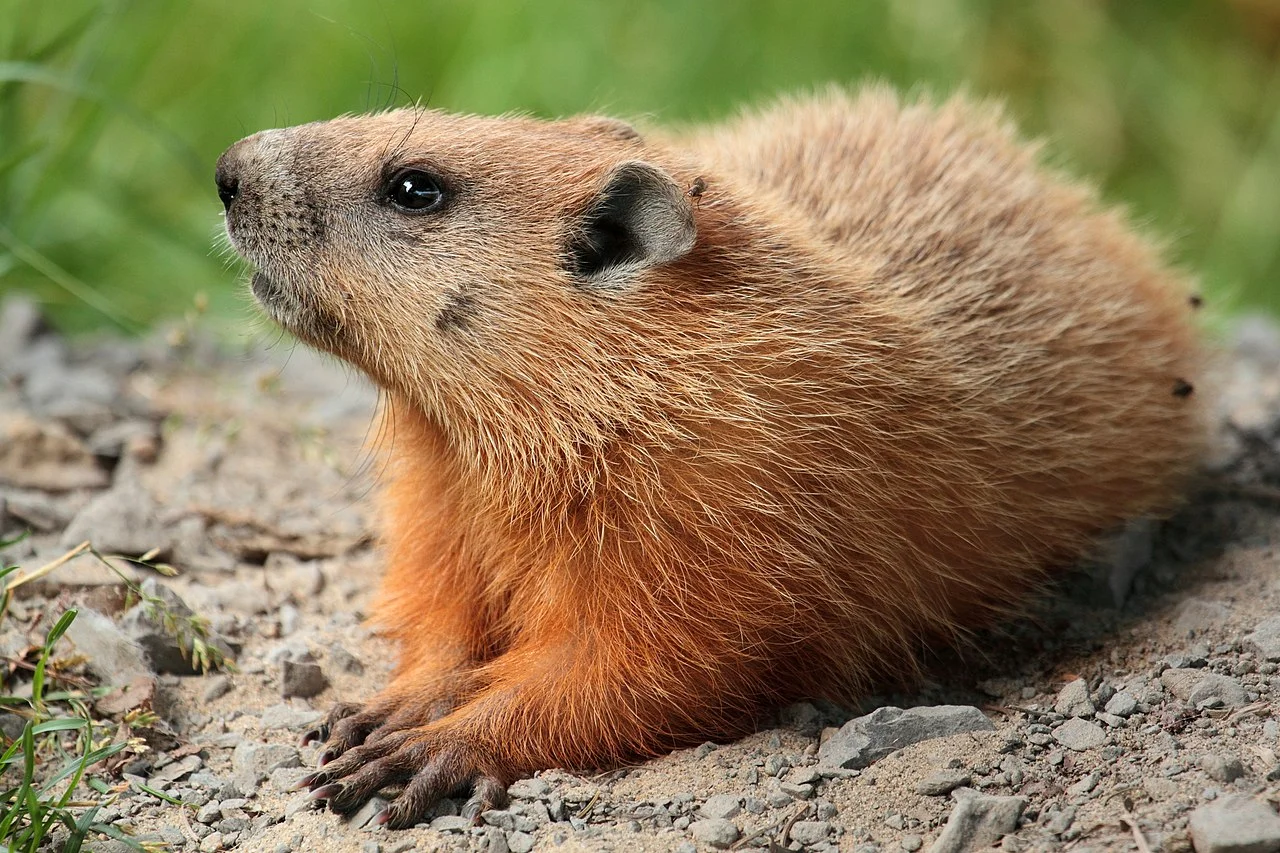
Marmot:
Robust build with a rounded body, short legs, and a bushy tail.
Fur color varies among species but often includes shades of brown and gray.
Groundhog/Woodchuck:
Similar to marmots, characterized by a stocky body, short legs, and a bushy tail.
Fur is brown and coarse, providing insulation in colder climates.
Ecological Implications:
Camouflage in fur color helps them blend into their natural surroundings, aiding in predator avoidance.
Similar appearances may result in shared ecological niches, influencing competition for resources.
3. Size:
Marmot:
Sizes vary among species, but generally, they range from 13 to 27 inches (33 to 68 cm) in length.
Groundhog/Woodchuck:
Typically around 16 to 26 inches (41 to 66 cm) long.
Comparison:
Comparable sizes indicate overlapping ecological roles.
Ecological Implications:
Size adaptation could influence their ability to access certain food sources or burrow in specific environments.
4. Weight:
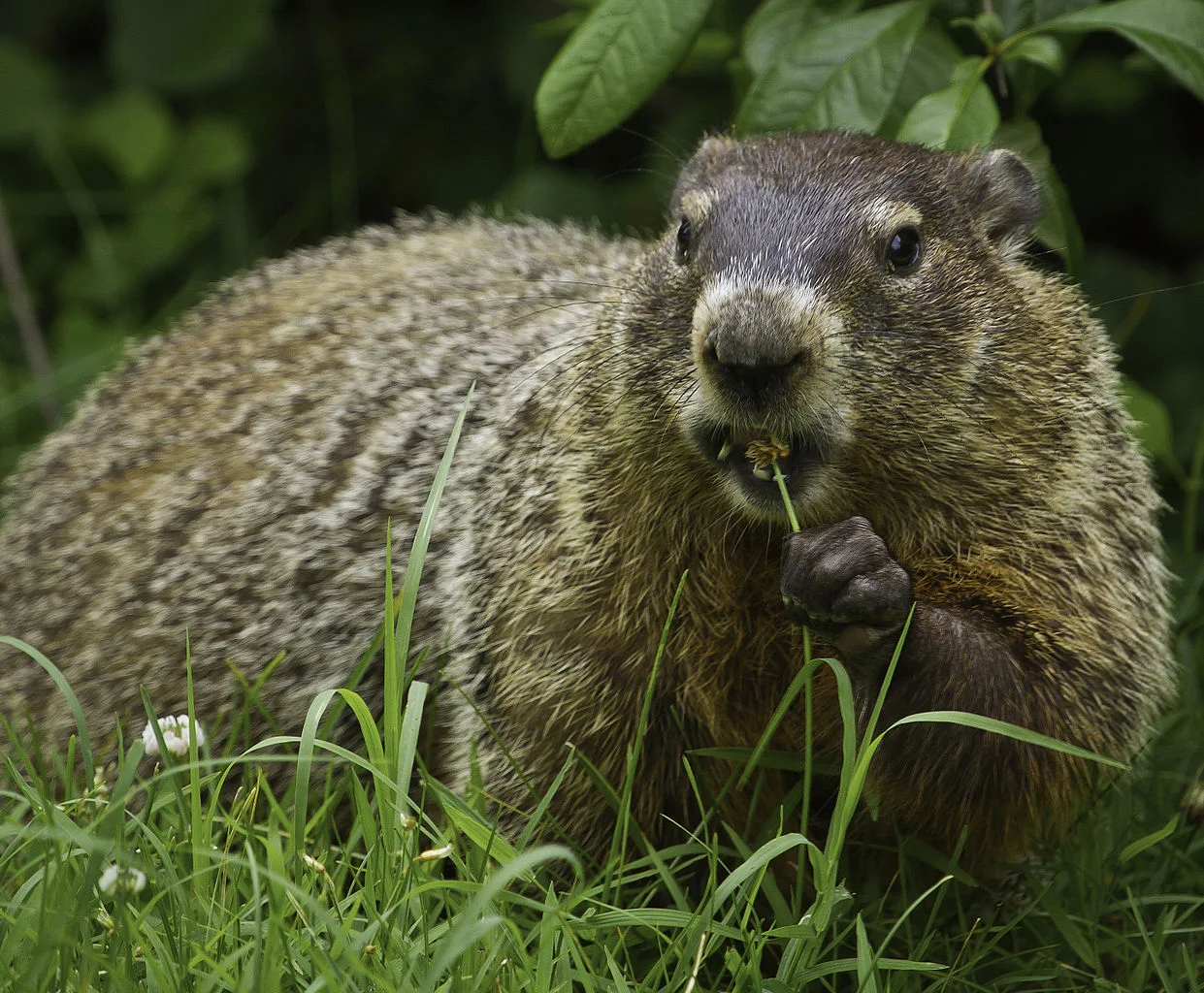
Marmot:
Weights range from 2 to 11 pounds (0.9 to 5 kg) depending on the species.
Groundhog/Woodchuck:
Weights usually between 4 to 9 pounds (1.8 to 4.1 kg).
Comparison:
Similar weight ranges suggest shared ecological functions.
Ecological Implications:
Weight influences burrow construction and depth, impacting the ecosystem through soil disturbance.
5. Bite Force (PSI – Pounds per Square Inch):
Marmot:
Specific PSI data may vary, but generally moderate due to their rodent dentition.
Groundhog/Woodchuck:
Around 700 PSI.
Comparison:
Similar bite force implies common adaptations for herbivorous feeding.
Ecological Implications:
Efficient herbivore capabilities influence plant consumption patterns, potentially affecting local flora.
6. Physical Offensive Advantages:
Marmot:
Sharp incisors for cutting vegetation and defending against predators.
Groundhog/Woodchuck:
Powerful incisors aid in cutting through roots and tough plant material.
Comparison:
Shared adaptation for herbivorous diet and defense.
Ecological Implications:
Effective plant consumption and predator deterrence contribute to ecological balance.
7. Physical Defensive Advantages:
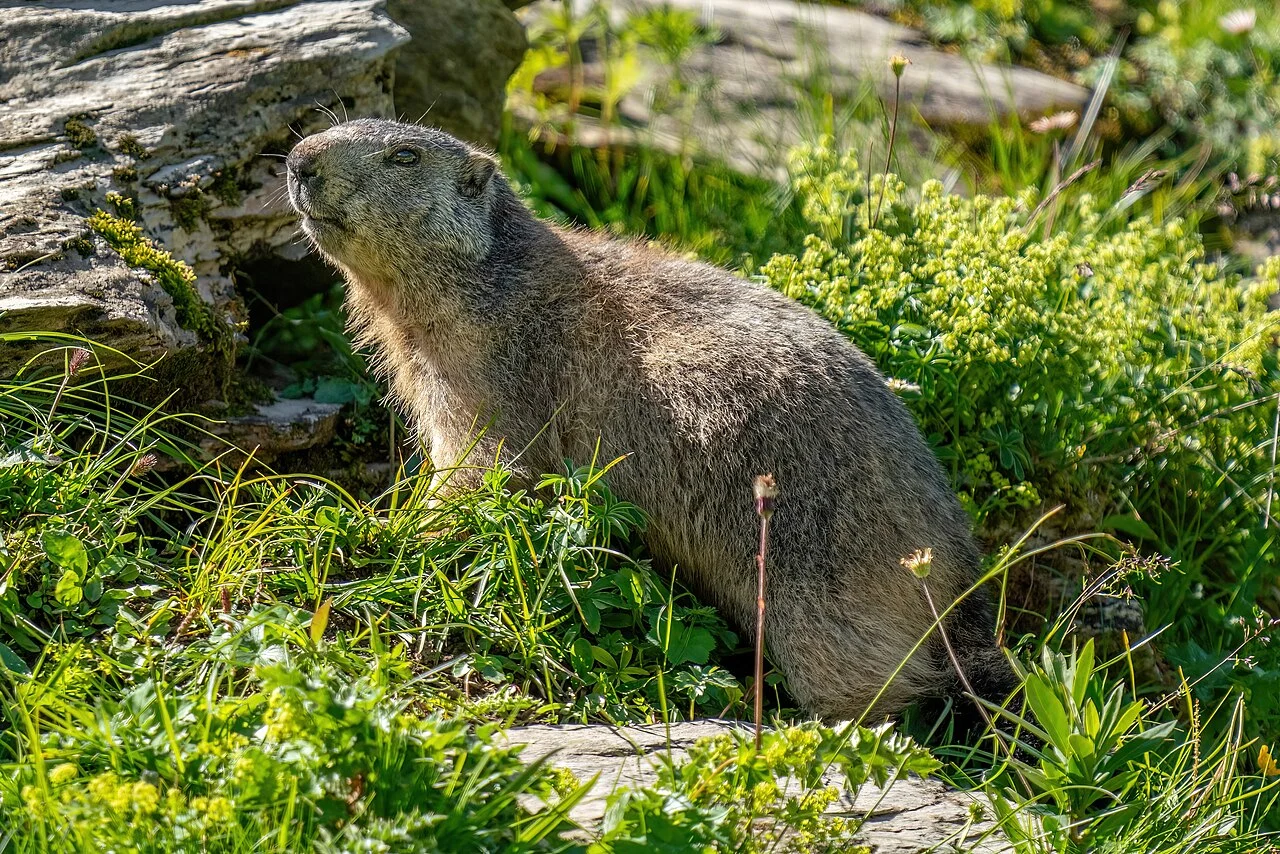
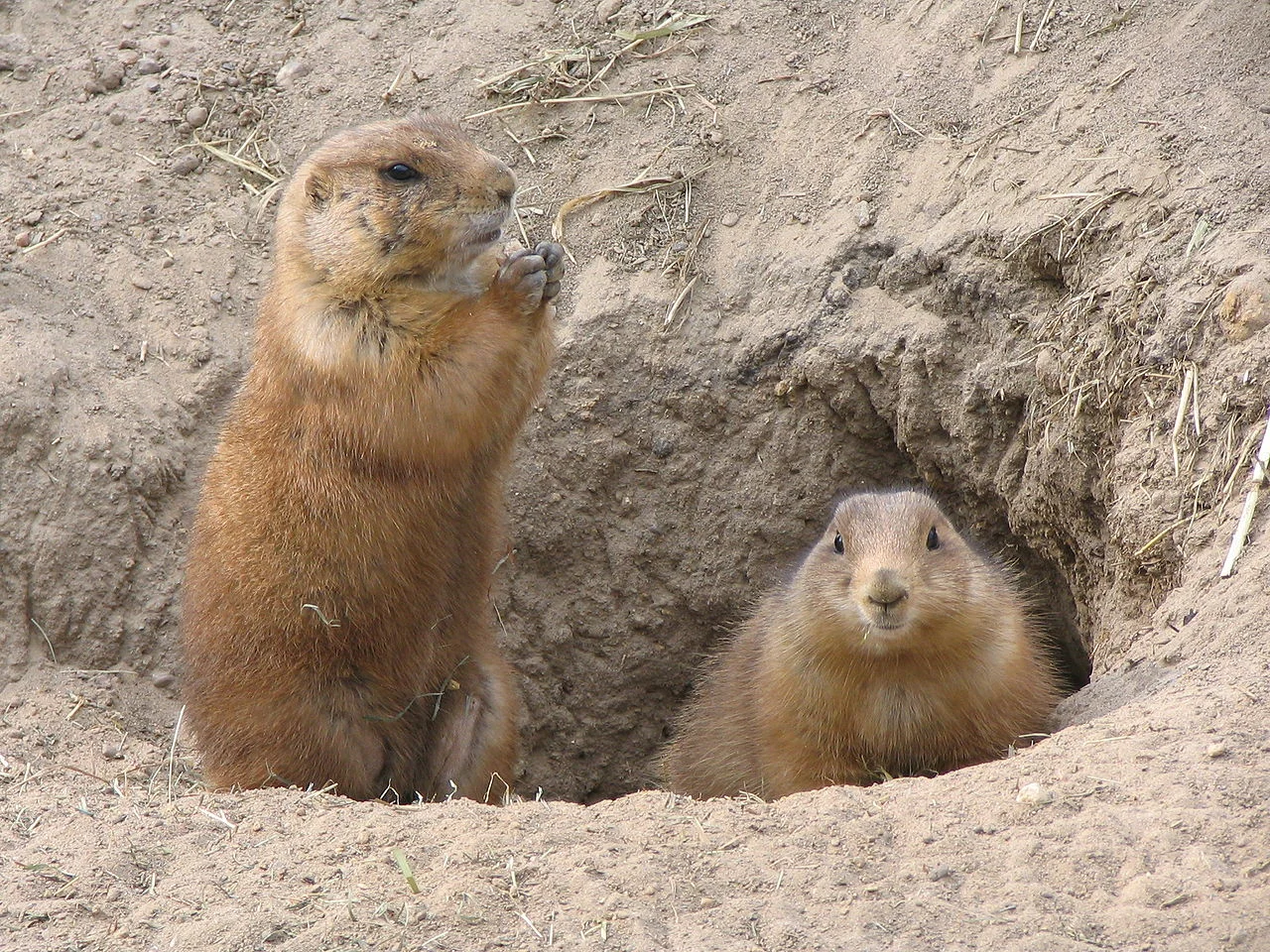
Marmot:
Agility and the ability to retreat to burrows provide defensive strategies.
Groundhog/Woodchuck:
Quick retreat into burrows for protection against predators.
Comparison:
Both rely on burrows for safety, highlighting shared defensive tactics.
Ecological Implications:
Burrowing behavior contributes to soil aeration and influences the local ecosystem.
8. Speed (Km/hour or Mile/hour):
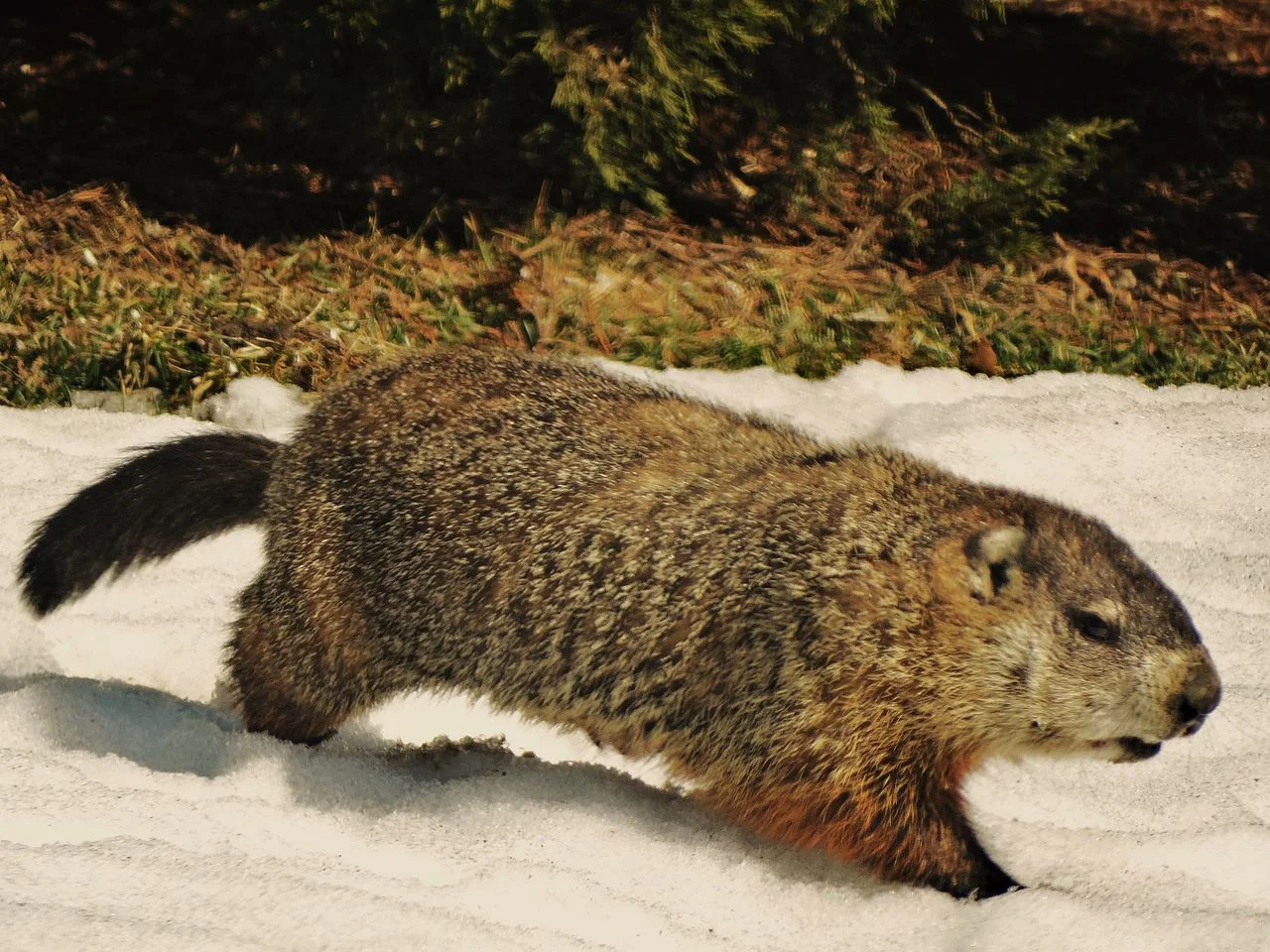
Marmot:
Generally moderate runners, capable of reaching speeds up to 15-20 mph.
Groundhog/Woodchuck:
Speeds reach around 8 miles per hour.
Comparison:
Marmots exhibit slightly higher speeds.
Ecological Implications:
Speed influences predator evasion and foraging efficiency.
9. Agility:
Marmot:
Agile climbers and swimmers, enhancing adaptability to diverse terrains.
Groundhog/Woodchuck:
Agile on land, capable of navigating various landscapes.
Comparison:
Shared agility for accessing different habitats.
Ecological Implications:
Adaptability aids in resource utilization and habitat expansion.
10. Senses:
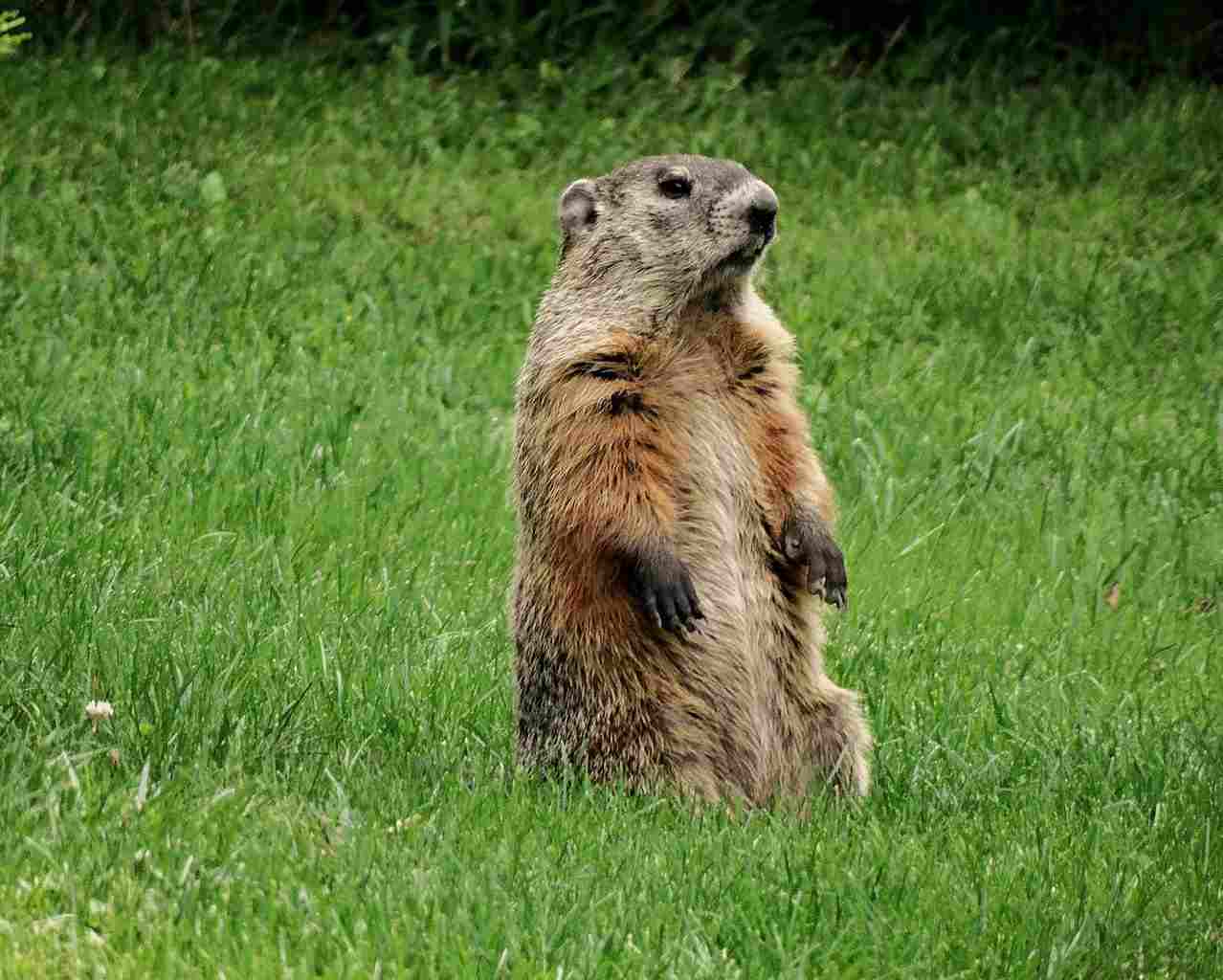
Marmot:
Keen senses of sight and hearing, crucial for detecting predators.
Groundhog/Woodchuck:
Well-developed senses of sight and hearing, essential for predator awareness.
Comparison:
Similar reliance on sight and hearing for survival.
Ecological Implications:
Heightened senses contribute to early predator detection, impacting ecosystem dynamics.
11. Overall Physical Capacity:
Marmot:
Robust physical build, combining agility, climbing skills, and moderate speed.
Groundhog/Woodchuck:
Sturdy physique, exhibiting agility and moderate speed.
Comparison:
Both possess well-rounded physical capacities.
Ecological Implications:
Versatile physical abilities enhance adaptability to various environmental challenges.
12. Habitat Preference(s) and Geographic Region:
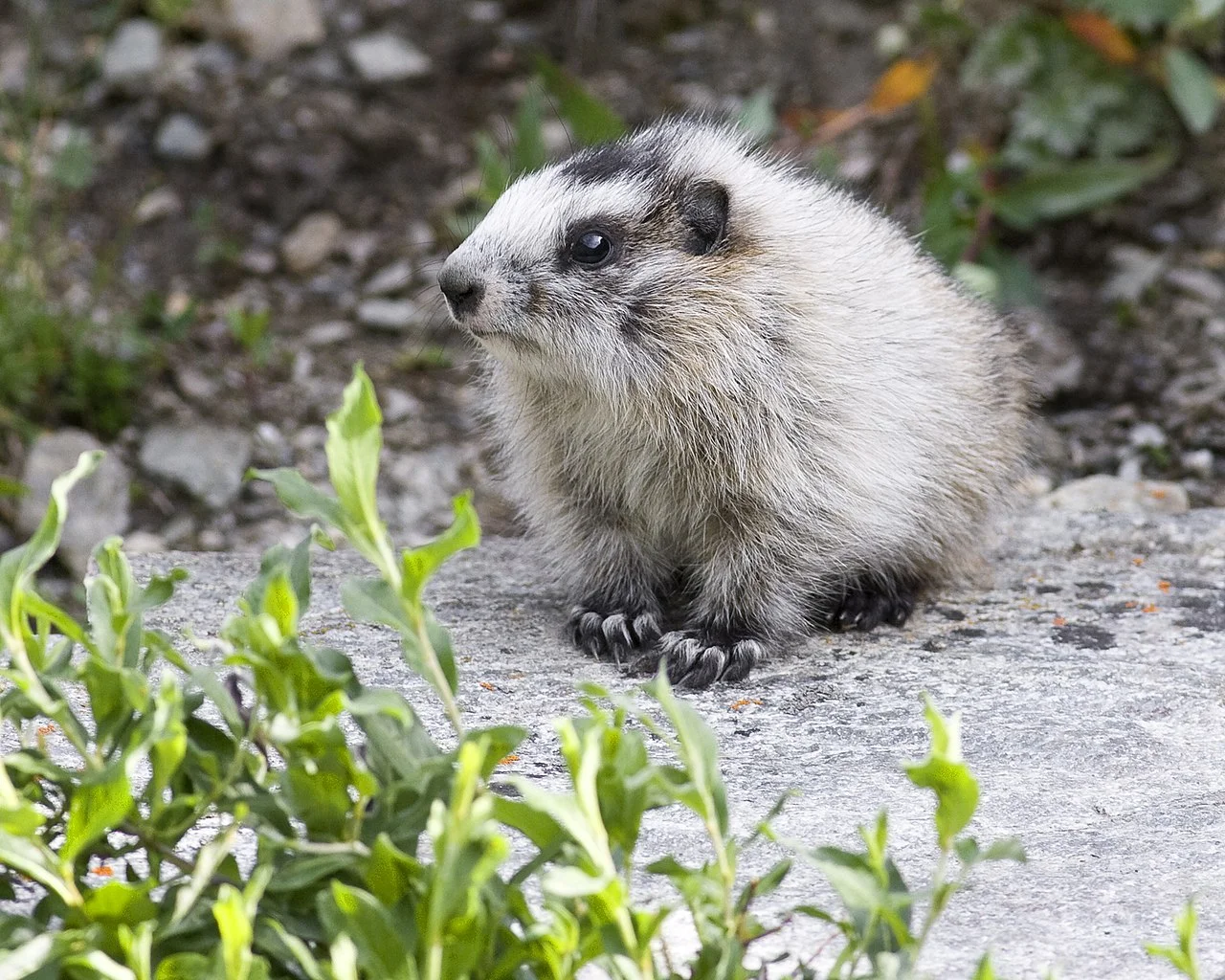
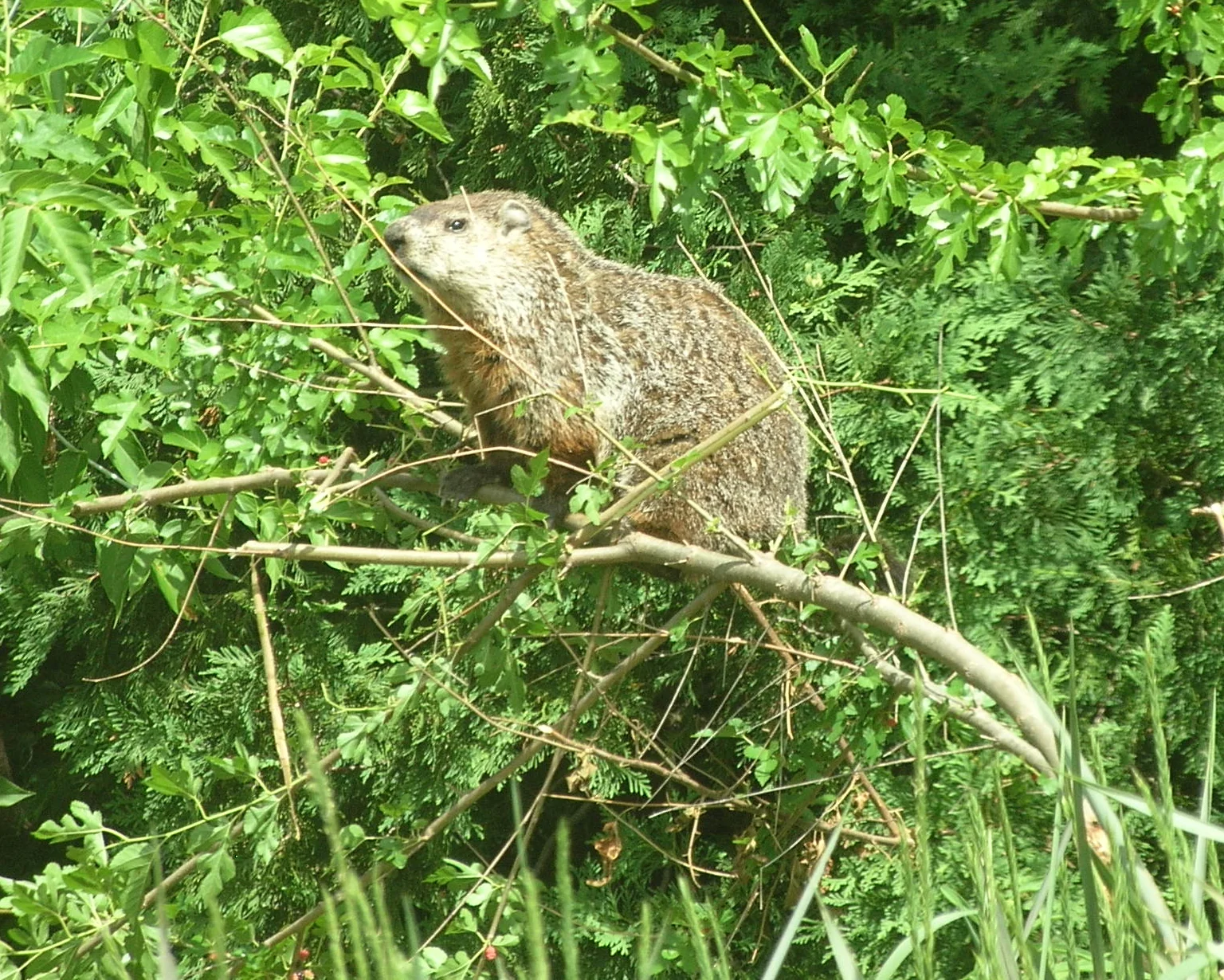
Marmot:
Alpine and mountainous regions, preferring cooler climates.
Groundhog/Woodchuck:
Diverse habitats, including grasslands, meadows, and woodland edges.
Comparison:
Distinct preferences but may overlap in transitional zones.
Ecological Implications:
Influence on vegetation and soil dynamics based on habitat choices.
13. Tracks:
Marmot:
Distinctive tracks with small, rounded paw prints, often showing claw marks.
Groundhog/Woodchuck:
Similar paw prints with claw marks, indicative of rodent tracks.
Comparison:
Paw print similarities, reflecting shared morphological features.
Ecological Implications:
Tracking aids in understanding their movements and behavior within ecosystems.
14. Lifespan:
Marmot:
Varies among species but typically ranges from 8 to 15 years.
Groundhog/Woodchuck:
Around 6 to 8 years in the wild.
Comparison:
Marmots generally have a longer lifespan.
Ecological Implications:
Longer lifespans may influence population dynamics and ecological interactions.
15. Mode of Feeding:
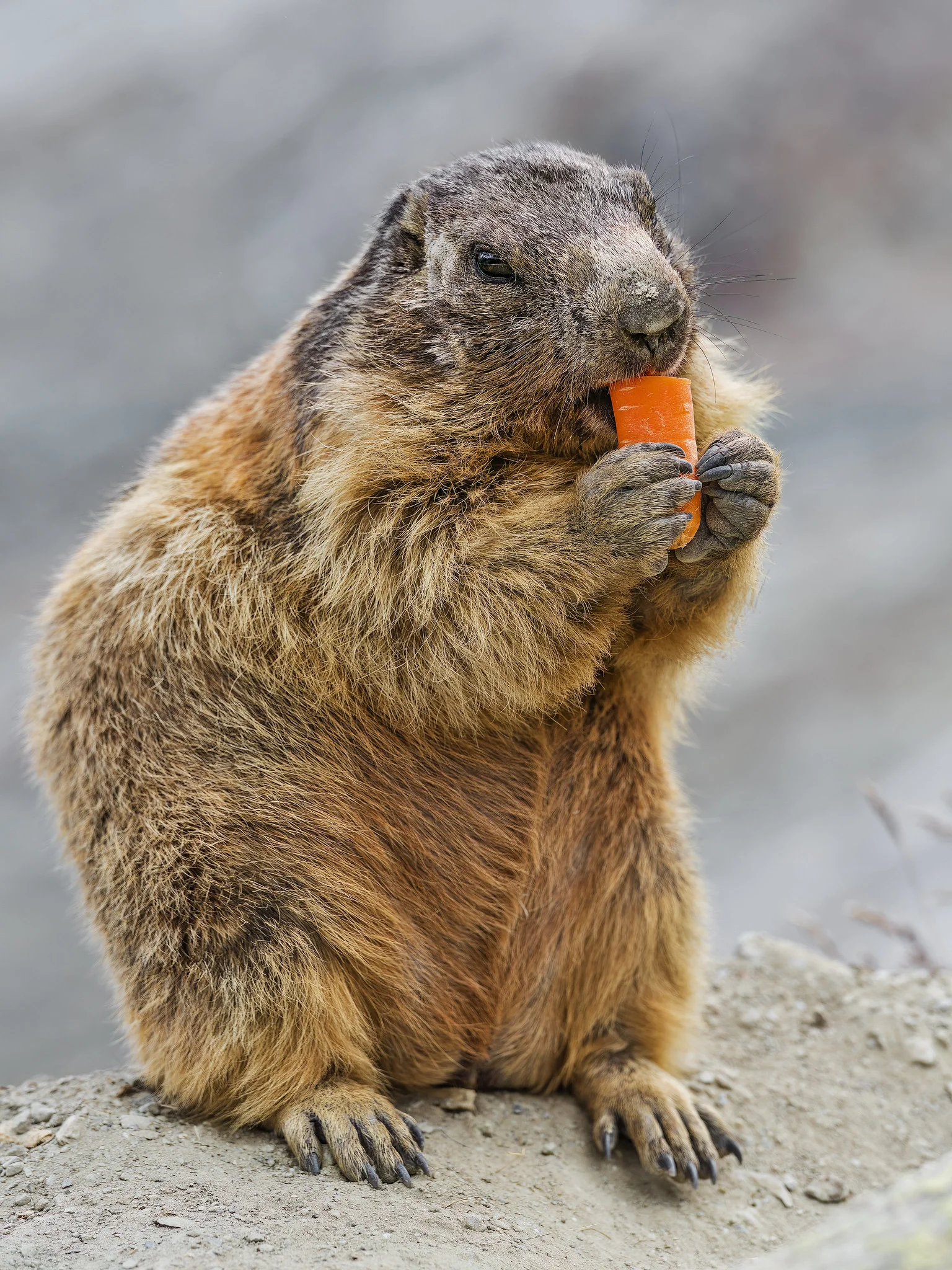
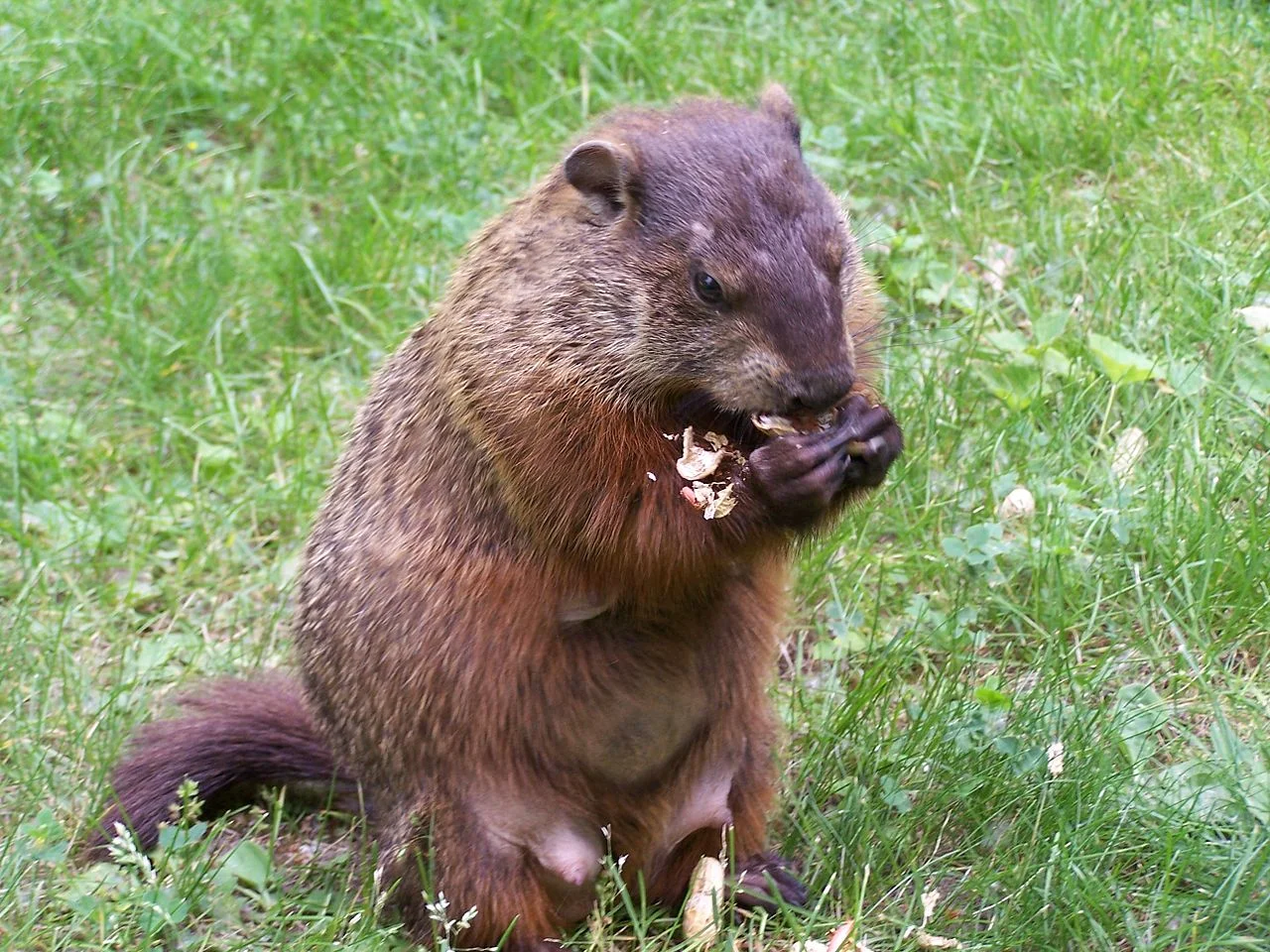
Marmot:
Herbivorous diet, primarily consuming grasses, herbs, and vegetation.
Groundhog/Woodchuck:
Herbivorous, with a preference for vegetation like grasses and clover.
Comparison:
Shared herbivorous feeding behavior.
Ecological Implications:
Influence on local vegetation dynamics and plant community structure.
16. Intelligence:
Marmot:
Limited cognitive abilities, focusing on survival instincts.
Groundhog/Woodchuck:
Moderate intelligence, displaying problem-solving skills.
Comparison:
Differences in cognitive abilities.
Ecological Implications:
Cognitive capacities influence adaptability to changing environmental conditions.
17. Social Behavior:
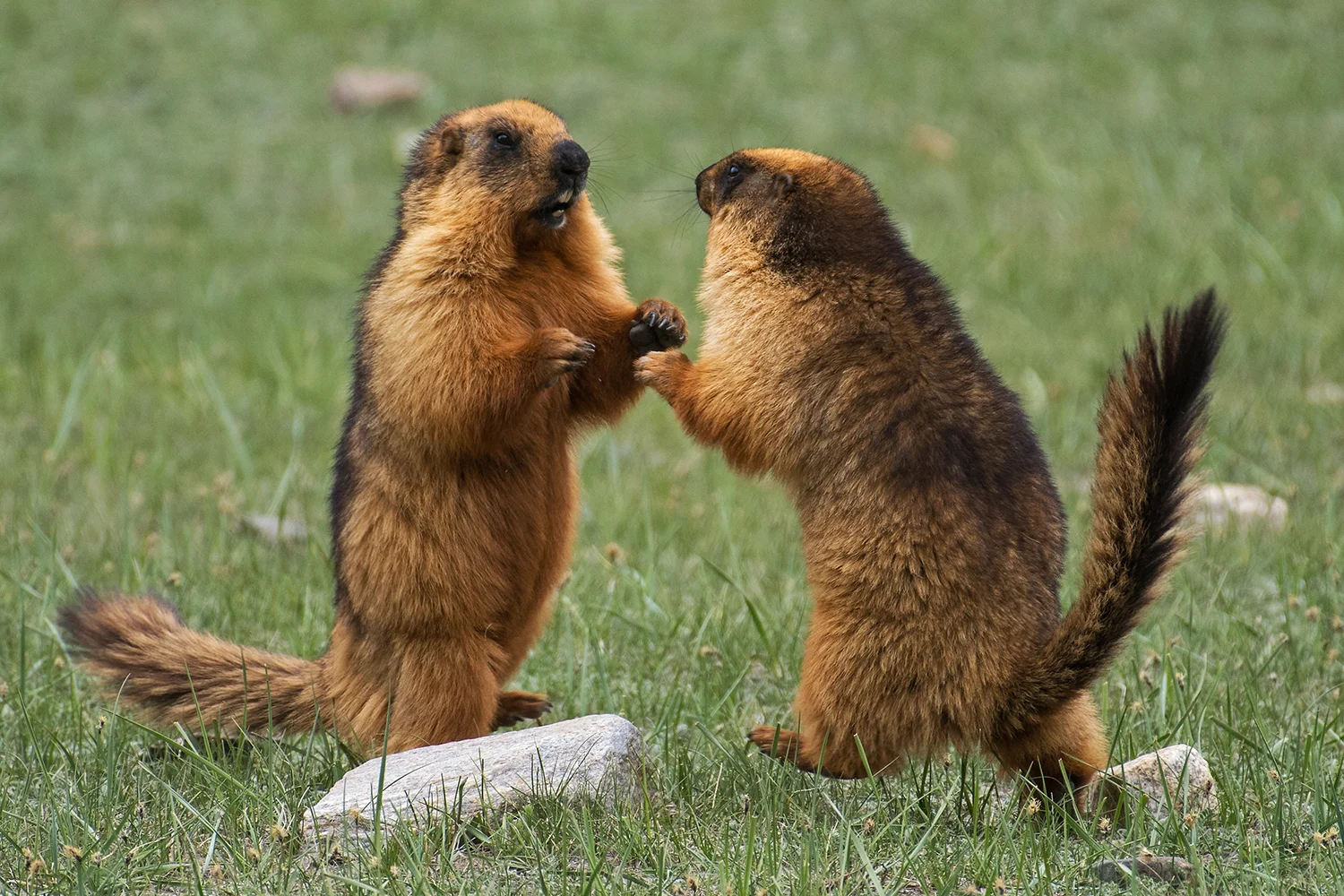
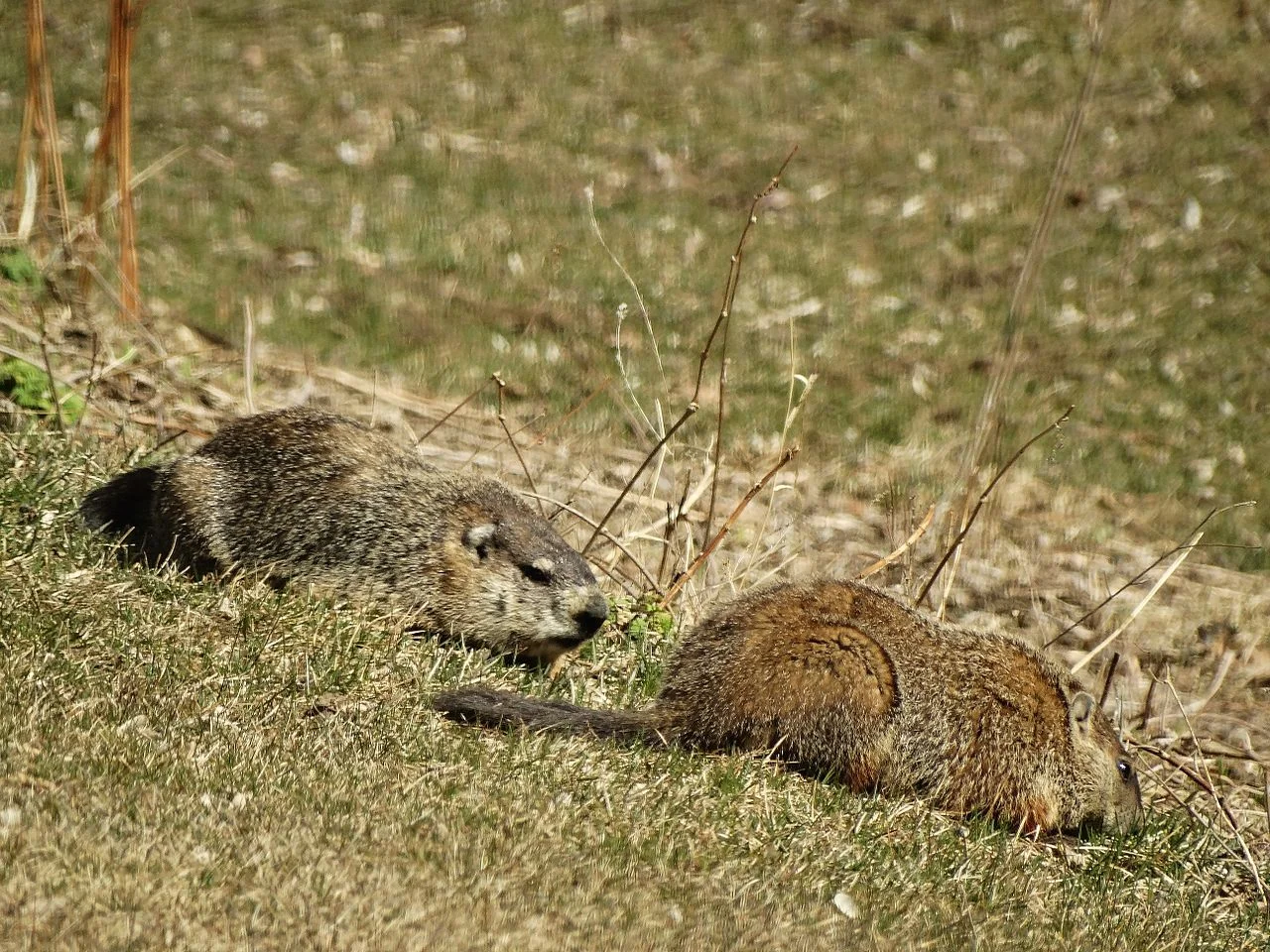
Marmot:
Varied social structures, some species exhibit social colonies.
Groundhog/Woodchuck:
Generally solitary, except during the mating season.
Comparison:
Distinct social behaviors.
Ecological Implications:
Social structures impact interactions within the ecosystem, influencing population dynamics.
18. Mode of Reproduction:
Marmot:
Generally polygynous with a breeding season in spring or early summer.
Groundhog/Woodchuck:
Polygynous, mating occurs during a brief period in early spring.
Comparison:
Similar reproductive strategies with polygynous mating.
Ecological Implications:
Reproductive patterns influence population growth and dynamics within their respective habitats.
19. Parental Behavior:
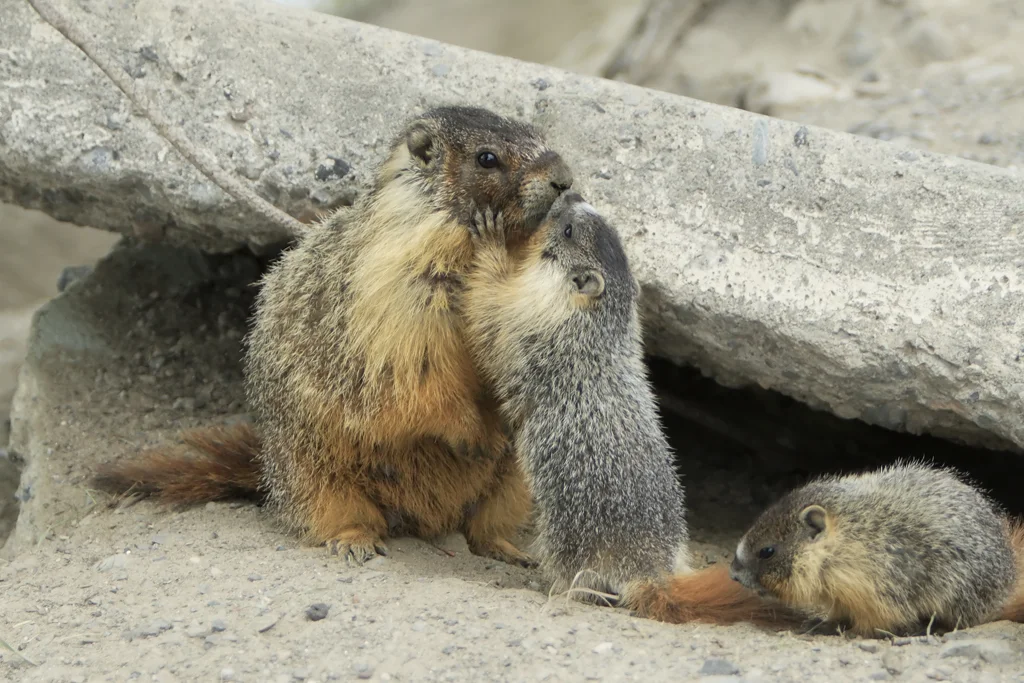
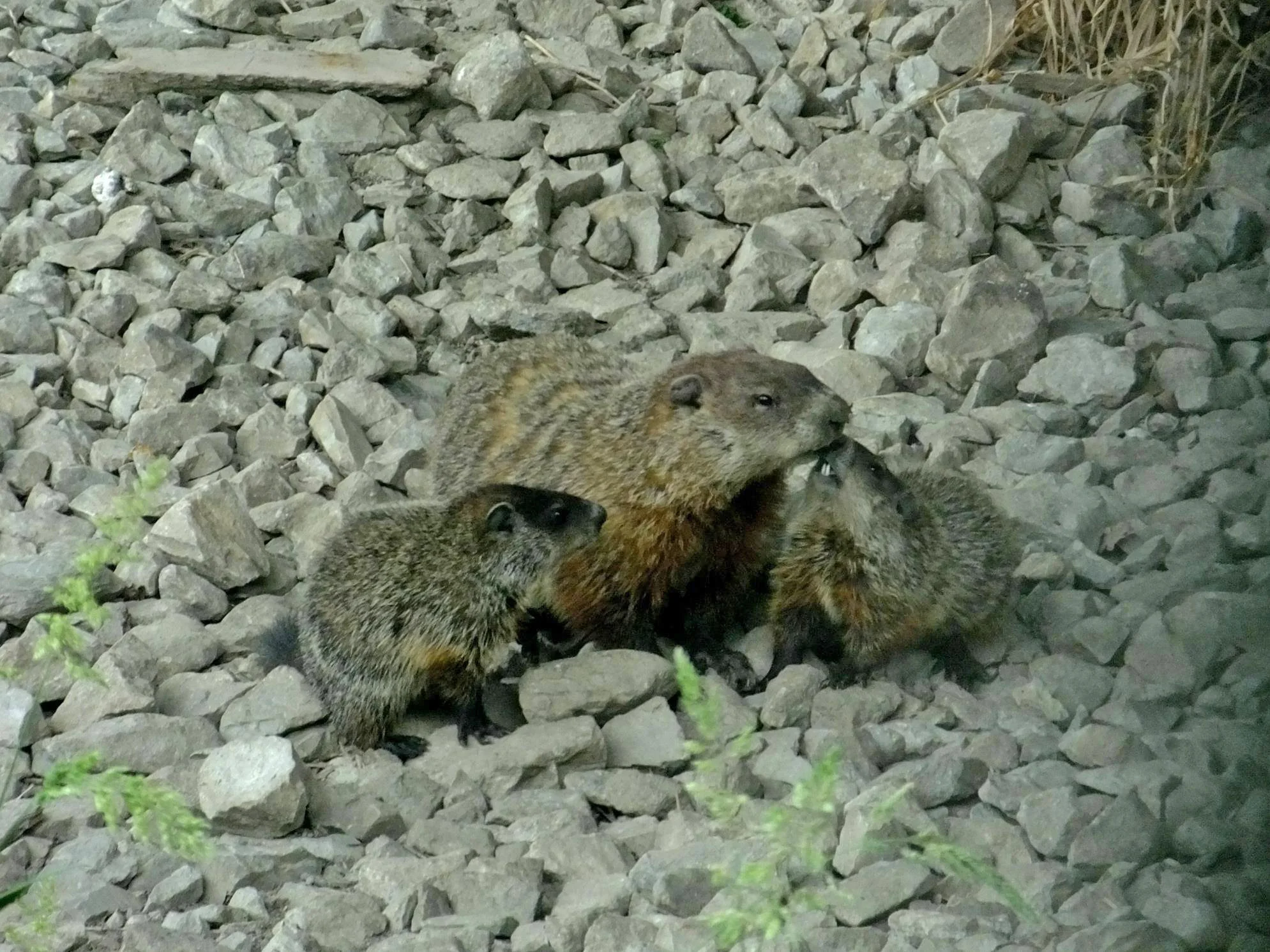
Marmot:
Varied parental care; some species show communal care within colonies.
Groundhog/Woodchuck:
Limited parental care, with females primarily responsible for raising offspring.
Comparison:
Differences in parental care strategies.
Ecological Implications:
Parental behaviors impact juvenile survival rates and overall population stability.
20. Proximity to Human-Inhabited Areas:
Marmot:
Generally found in remote, less populated areas due to habitat preferences.
Groundhog/Woodchuck:
Commonly found in suburban and rural areas, often adapting to human presence.
Comparison:
Differences in tolerance to human-inhabited landscapes.
Ecological Implications:
Impact on local ecosystems and potential conflicts with human activities.
21. Behavior Toward Humans:
Marmot:
Varies; some species may be more elusive or wary of human presence.
Groundhog/Woodchuck:
Can display a range of behaviors, from timid to bold, especially in suburban areas.
Comparison:
Differences in responses to human encounters.
Ecological Implications:
Behavioral patterns affect interactions with human communities and potential impacts on both the animals and humans.
22. Danger Posed to Humans:
Marmot:
Generally pose minimal danger to humans; some species may display defensive behavior if threatened.
Groundhog/Woodchuck:
Rarely pose a threat to humans; may become defensive if cornered.
Comparison:
Both species typically avoid confrontation with humans.
Ecological Implications:
Limited danger to humans reduces the likelihood of negative interactions.
23. Associated Precautions:
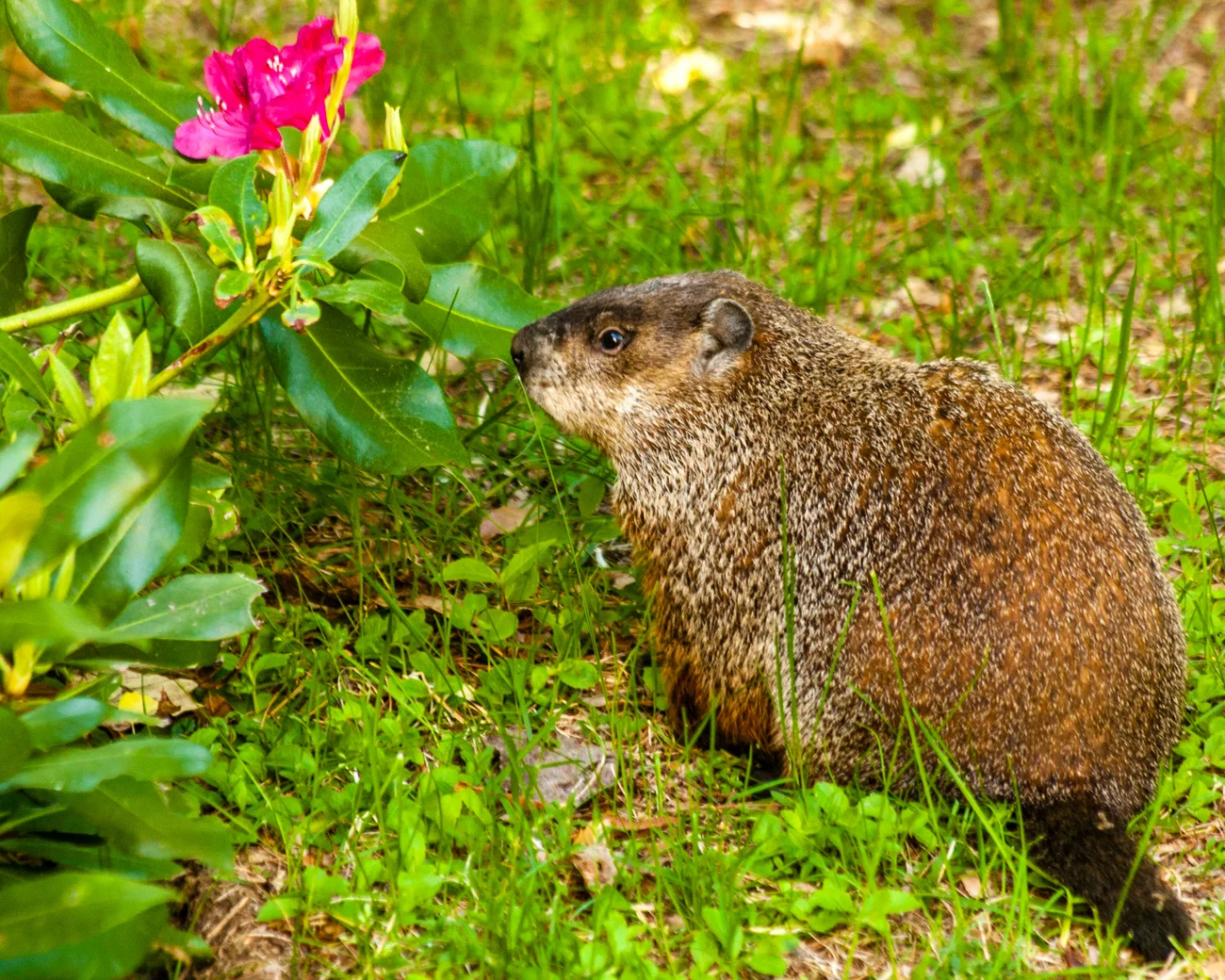
Marmot:
Observing from a distance is advisable; avoid provoking defensive behavior.
Groundhog/Woodchuck:
Caution should be exercised when approaching, especially if displaying defensive behavior.
Comparison:
Similar precautions regarding human interactions.
Ecological Implications:
Human awareness and precautions contribute to coexistence and minimize disturbances.
24. Conservation Status:
Marmot:
Conservation status varies by species; some are of least concern, while others may face threats.
Groundhog/Woodchuck:
Generally of least concern due to adaptability to various habitats.
Comparison:
Conservation statuses differ among marmot species.
Ecological Implications:
Conservation efforts may be species-specific based on individual threats and vulnerabilities.
*Summary of Comparison
Taxonomy:
Marmot: Genus Marmota, family Sciuridae.
Groundhog/Woodchuck: Marmota monax, family Sciuridae.
Appearance:
Marmot: Robust build, varied fur colors.
Groundhog/Woodchuck: Stocky with brown, coarse fur.
Size:
Marmot: 13-27 inches.
Groundhog/Woodchuck: 16-26 inches.
Weight:
Marmot: 2-11 pounds.
Groundhog/Woodchuck: 4-9 pounds.
Bite Force (PSI):
Marmot: Moderate.
Groundhog/Woodchuck: Around 700 PSI.
Physical Offensive Advantages:
Both have sharp incisors for herbivorous feeding.
Physical Defensive Advantages:
Both rely on burrows for protection.
Speed:
Marmot: Up to 15-20 mph.
Groundhog/Woodchuck: Around 8 mph.
Agility:
Both exhibit agility on land.
Senses:
Similar reliance on sight and hearing.
Overall Physical Capacity:
Both have well-rounded physical abilities.
Habitat Preference(s) and Geographic Region:
Marmot: Alpine and mountainous.
Groundhog/Woodchuck: Diverse habitats.
Tracks:
Both leave distinctive paw prints.
Lifespan:
Marmot: 8-15 years.
Groundhog/Woodchuck: 6-8 years.
Mode of Feeding:
Both herbivorous, influencing local vegetation.
Intelligence:
Marmot: Limited.
Groundhog/Woodchuck: Moderate.
Social Behavior:
Marmot: Varied social structures.
Groundhog/Woodchuck: Generally solitary.
Mode of Reproduction:
Both polygynous with a breeding season.
Parental Behavior:
Differences in parental care strategies.
Proximity to Human-Inhabited Areas:
Marmot: Remote areas.
Groundhog/Woodchuck: Suburban and rural areas.
Behavior Toward Humans:
Differences in responses to human encounters.
Danger Posed to Humans:
Both generally pose minimal danger.
Associated Precautions:
Similar precautions for human interactions.
Conservation Status:
Varies among marmot species.
Conclusion
I. Similarities:
Shared herbivorous diet, burrowing behavior, and reproductive strategies.
Similar physical characteristics, including size, weight, and general appearance.
II. Differences:
Varying lifespans, social behaviors, and conservation statuses.
Differences in intelligence, parental care, and responses to human presence.
